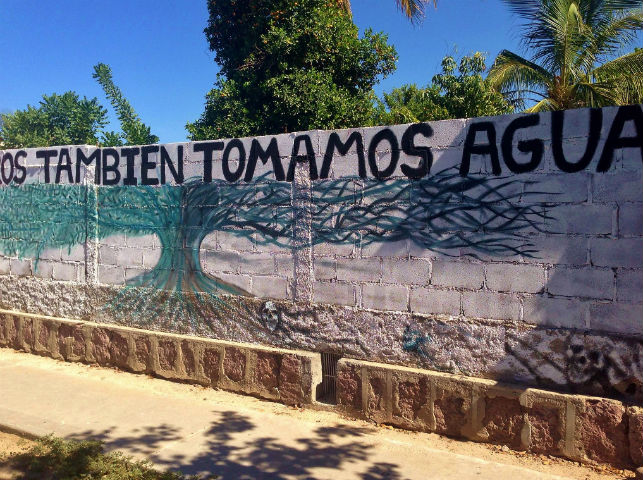16Dec13

One might ask, how do you afford a leap year? We talk about this broadly in our FAQ, but I thought I’d dig a little deeper.
While cost of living has been less expensive on the whole, things can get wildly expensive if we’re not careful. Cocktails are still ~$8-10 USD a pop and a pound of chicken at the grocery store is ~$5-7 USD. Other things, like dog grooming, are wildly inexpensive at only $10-15 USD!
Also, there are other costs that you need to plan for, like drinking water.
These empty bottles held 52 liters of water, and we just opened another 10-liter bottle yesterday that we’re about a quarter of the way through. I don’t remember the exact cost, but they’re approximately $30 MXN, or around $2.50 USD. So that’s around $15 for 12 days of drinking water for the three of us. Not outrageous, and definitely cheaper than buying single bottles of water. That’s why water bottles were on our long-term travel packing list. But I digress.
For the average person, your biggest recurring costs will be housing and food, so I’ll focus on those two for now. Plus, if you keep these two in check, you have money left for other fun stuff!
Housing
Laura Vanderkam says that the key to financial happiness is less house, and I couldn’t agree with her more. The same rule applies while traveling. Think about what’s really important to you. We were able to find something really cheap, but it had a cockroach problem and the running water was spotty so we had to upgrade. But otherwise, it would have been perfect: bed, sofa and coffee table, wi-fi, kitchen with a basic set of cookware, bathroom with a shower, a closet, and a central/walkable location. We’re not traveling to stay in fancy accommodations; we’re traveling to see the places the accommodations are located in!
We have a set housing budget, and we do our best to stay at or below it by staying places longer so we can pay weekly/monthly rates. Paying hotel rates of $90-190 USD/night is only for emergencies. Laura Vanderkam also talks about how, though housing is one of your biggest expenses, it also only requires a single moment of willpower versus daily discipline. And because it’s your biggest expense, that single moment of willpower can have a disproportionate impact on your budget. So the takeaway here: take the time to shop around for places to stay and be disciplined about sticking to your budget; it’ll enable day-to-day splurging.
Food
Oh, we remember the days of dropping $12 USD on a tiny, unsatisfying salad for lunch in San Francisco. Gone are those days, and we’re eating much, much better. You can get great quality food very cheap. A typical day of food looks like this:
- Breakfast, at home: Coffee, oatmeal, yogurt/fruit
- Lunch, out: Street food, comida corrida (see photo above), or an inexpensive cafe
- Snacks, out: Espresso drink/limonada/fresh-squeezed juice from a street vendor, cookie/slice of cake
- Dinner, at home: Something homemade that will last a couple days, e.g. sauteed meat and veggies with tortillas
- Booze: Wine if at home, beer if out
Now, we don’t always stick to this because a) that would be super boring and b) sometimes other activities dictate where you eat. Sometimes it’s nice to splurge on a big brunch, but then eat leftovers at home later. Sometimes you just want a PBJ for lunch, and then go out for your weight in tacos and beer for dinner. We’ve been eating really good so far and aren’t wanting for anything. The takeaways here are: pricey doesn’t necessarily mean good quality or a better time, and try to make at least one meal a day at home.
Hope these tips are interesting and useful! Still here? Here’s a Holly photobomb.






This is really great. Question on money in Mexico – do you just go to the ATM to get out money or are you using traveler’s checks?
Great question! Neither of us have ever used traveler’s checks — we always go to the ATM. Banks usually have good exchange rates (better than bringing dollars to exchange in person) and cash is more reliable. Check out this post (and the comments) for how we avoid ATM fees: http://ourleapyear.com/17oct13/